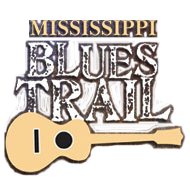Otis Rush
Otis Rush - Philadelphia
The blues form reached both artistic and emotional peaks in the works of Otis Rush,who was born south of Philadelphia in Neshoba County in 1935. His music, shaped by the hardships and troubles of his early life in Mississippi, came to fruition in Chicago in the 1950s. As a singer, guitarist, bandleader, and songwriter, Rush set new standards in Chicago blues and influenced countless blues and rock musicians, including Eric Clapton and Stevie Ray Vaughan.
Otis Rush rose from the poverty of a Mississippi sharecropper’s life to international fame as one of the most passionate singers and brilliant guitarists in the blues world. Rush, the sixth of seven children, was born in 1935, according to family sources, although biographies often give his birth date as 1934. His mother, Julia Campbell Boyd, ended up raising her family alone on farms in Neshoba and Kemper counties. During the throes of the Great Depression in a segregated society, although times were hard, with the children often missing school to work in the cotton fields, Julia Boyd did own a wind-up Victrola record player. Rush heard blues records at home and on jukeboxes in Philadelphia when his mother would bring him to town. He began playing harmonica, and also sang in a church choir.
When his oldest brother, Leroy Boyd, was away from home, Otis started secretly playing Leroy’s guitar. With no musical training, he devised his own unorthodox method, playing left-handedwith the guitar upside down. Rush’s distinctive style was rooted in his self-taught technique and his ability to transform sounds he heard into notes on his guitar. One sound he recalled from his childhood was Leroy’s whistling.
As a young teen, Rush was already married, sharecropping cotton and corn on a five-acre plot. On Otis Lewis’s farm, Rush heard guitarist Vaughan Adams, a friend of his mother’s, but there were few other blues musicians around Philadelphia. Rush only became inspired to be a professional musician after visiting his sister in Chicago. She took him to a Muddy Waters performance, and, as Rush recalled, “I flipped out, man. I said, ‘Damn. This is for me.’”
Rush moved to Chicago and learned Waters’s music, but soon developed a more modern, original approach that made him one of the most exciting young talents in the blues world. In 1956, his first record, “I Can’t Quit You Baby,” produced by Willie Dixon on the Cobra label, was a national rhythm & blues hit, later covered by Led Zeppelin and Little Milton Campbell. Its depth and intensity set the tone for the music Rush trademarked–heartrending blues that sometimes brought audiences to tears. Rush continued to perform in Chicago and around the world, developing devoted followings in Europe and Japan. Heralded as a “guitar hero,” he shared stages with Eric Clapton, Carlos Santana, Buddy Guy, and Stevie Ray Vaughan. He was elected to the Blues Hall of Fame in 1984, and won a GRAMMY® award in 1998 for his CD Any Place I’m Going.
content © Mississippi Blues Commission
[ BACK TO TOP ]

